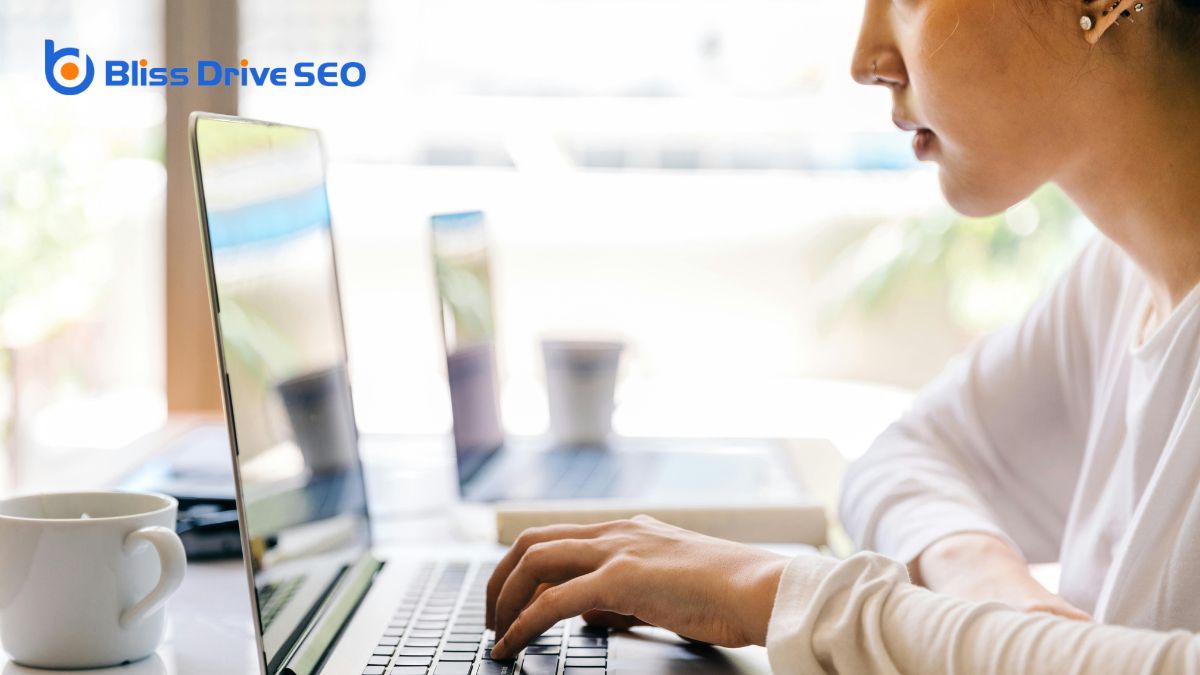Learn More About Us

Optimizing ecommerce product page images for SEO is essential for visibility, load times, and user engagementThe level of interaction and involvement users have with social media content.. Name your image files descriptively and use alt textDescriptions added to images to help search engines understand the content of images. with relevant keywordsWords or phrases that users type into search engines to find information. to enhance accessibility and SEO. Compress images to improve loading speeds while maintaining quality. Choose JPEG format for a good balance between quality and size. Use responsive designA web design approach that makes web pages render well on a variety of devices and window or screen ... to ensure images look great on any device. Implement image sitemaps so search engines can index your images effectively. Keeping images high-quality and unique bolsters trust and brand recognitionThe ability of consumers to identify a brand by its attributes, such as logo, color, or packaging.. Leverage tools like Anywebp and Tinypng for efficient image management. Discover more strategies to fully optimize your images.
Optimizing your image file names is an important step in enhancing your ecommerce product page's SEO. When you name your product images, you should aim for descriptive and brief file names. For instance, using "red-sneakers.jpg" instead of something generic like "IMG_1234.jpg" can greatly boost your image SEO. This approach allows search engines to understand what the image is about, improving your chances of appearing in relevant search results.
Incorporating specific details like the brand, product type, and color into your image file names will further enhance visibility. For example, a file name like "nike-red-sneakers.jpg" is much more effective than a vague or overly long name. Just remember that dashes between words are important for search engines' readability.
Avoid keyword stuffingOverloading a page with keywords to manipulate search engine rankings. and excessively long file names. Instead, stick to clear and concise names that convey important information. Well-named image files, such as "organic-cotton-tshirt.jpg," contribute positively to SEO rankingsThe position at which a website appears in the SERP., making your product pages easier to find.

Including well-crafted alt text for your images is crucial for boosting your ecommerce product page's SEO. Alt text, a brief description of an image, helps search engines comprehend the content of your images, which in turn enhances your website's visibility.
To optimize your alt text effectively, you should incorporate relevant keywords that are closely associated with the image and the product it represents. This practice improves your SEO by aligning your image descriptions with search queries.
When creating alt text, be succinct and descriptive. Avoid excessive use of keywords, as it can damage your SEO rather than support it. Instead, concentrate on producing an accurate and clear representation of the image content.
For instance, if you're marketing a crimson leather handbag, your alt text could be "crimson leather handbag with gold chain strap," which precisely describes the product while including vital keywords.
Proper alt text also enhances accessibility for visually impaired users who depend on screen readers to navigate the web. By accurately portraying your images, you guarantee that all users can comprehend your content.
Managing image sizes is important for improving your ecommerce site's performance and SEO. Compress your images without sacrificing quality and choose ideal dimensions to guarantee fast load times.
Use responsive design to adapt images for different devices, enhancing user experience and engagementThe interactions that users have with a brand’s content on social media..
Compressing images without quality loss is an essential aspect of image size management that ensures your ecommerce product pages load quickly and look stunning. By using image compression techniques, you can reduce file sizes significantly without sacrificing visual appeal. This balance between quality and performance is important for enhancing the user experience on your ecommerce site.
When you compress images effectively, you guarantee your ecommerce product pages maintain their attractiveness while still loading rapidly. This not only pleases your visitors but also positively impacts your SEO rankings. Search engines favor fast-loading pages, so keeping your images under 70KB can give your site a substantial boost in visibility.
Efficient image size management involves using tools and methods that compress images without causing quality loss. Techniques like lossless compression can trim down file sizes while preserving the original quality. This way, your product images remain crisp and clear, capturing the interest of potential buyers without slowing down your site.
Choosing the best dimensions for your ecommerce product images is essential for balancing quality and loading speed. Ideal image dimensions typically hover around 1200 pixels in width for desktop and 600 pixels for mobile. This sizing ensures that your images maintain high quality without excessively slowing down page loading times.
Large images can be a major culprit for sluggish page performance, which directly impacts your SEO rankings. By resizing images to the appropriate dimensions, you can greatly improve loading speeds. Balancing image quality with file size is vital; you don't want your site to look pixelated or blurry, but you also need it to load quickly.
Correctly sized images prevent distortion and guarantee that your products look their best on various devices and screen sizes. It's not just about aesthetics; resizing images to ideal dimensions reduces server load, which enhances user experience and boosts overall SEO performance.
In essence, by managing image dimensions effectively, you can create a visually appealing ecommerce site that's both fast and SEO-friendly. This balance is crucial to attracting and retaining customers, ultimately enhancing your site's performance and visibility.

In today's multi-device world, ensuring your ecommerce product images look great everywhere is important, and that's where responsive design comes in. Responsive design allows your images to automatically adjust to fit different screen sizes and devices, maintaining a consistent look and feel. This is essential for providing a seamless user experience across desktops, tablets, and smartphones.
Proper image size management in responsive design helps maintain both image quality and page loading speed. By optimizing image sizes for each device, you guarantee that your pages load quickly, which is crucial for user satisfaction and mobile SEOOptimization techniques to ensure a website performs well on mobile devices.. Faster-loading pages leadA potential customer referred by an affiliate who has shown interest in the product or service but h... to better engagement and lower bounce rates, keeping potential customers on your site longer.
To optimize your ecommerce product images for mobile devices, consider using techniques like srcset and the picture element in HTML. These allow browsers to select the appropriate image size based on the device's screen resolution and size. This not only improves user engagement but also enhances your mobile SEO rankings, making your products more discoverable.
When choosing image file types for your ecommerce product pages, prioritize formats like JPEG that offerThe specific product or service being promoted by affiliates. a great balance between quality and file size.
Smaller file sizes help your pages load faster, which improves both user experience and SEO rankings.
Opting for JPEG as your image file format can significantly improve your ecommerce product pages. JPEG images are popular for a reason—they offer an ideal balance between quality and file size. By selecting JPEG for your product photos, you guarantee that your images maintain clarity without slowing down your website performance.
Here's why JPEG is an excellent option:
Choosing the right image file format is essential for optimizing your ecommerce site. JPEG images strike a perfect balance, enhancing visual appeal without compromising speed. By maintaining manageable file sizes, you can guarantee quicker loading times and a better user experience. Make the smart choice for your ecommerce product images by opting for JPEG.
Speed matters. When it comes to optimizing your ecommerce product pages, choosing the right image file type is essential. JPEG files strike an ideal balance between image quality and image file size, which is important for maintaining fast page load times.
Faster loading speeds enhance user experience and keep visitors on your site longer, reducing bounce rates and potentially increasing sales.
By selecting JPEG files, you make sure that your product images look great without weighing down your pages. The smaller file size of JPEGs means quicker downloads, helping you optimize product pages for better performance.
Remember, slow loading times can severely impact your search engine rankings, as search engines prioritize speed in their algorithms.
To truly optimize product pages, always consider the impact of image file types on both page performance and user engagement. JPEGs are generally the best choice, but always test different formats to see what works best for your specific needs.
Keeping image file size low while maintaining quality will provide a smoother, faster browsing experience for your customers, boosting both your SEO performance and your bottom line. Don't underestimate the power of fast page load times in today's competitive ecommerce landscape.

Efficiently enhancing your ecommerce product page images involves a pivotal step: utilizing image maps. These maps are essential for helping search engines discover and index images on your site effectively. By incorporating image maps, you provide additional information that enhances the search visibility of your images, which can drive more traffic to your ecommerce site.
When you create and submit image maps to search engines like Google, you're ensuring that your product page images are indexed efficiently. This increases the likelihood that your images appear in relevant search results. Here are some benefits of utilizing image maps:
The importance of image quality in ecommerce can't be exaggerated. High-quality images are vital for building trust and engaging customers on your site. When you use quality images, you accurately represent product features, color, size, and shape, helping to avoid misunderstandings and potential returns. This transparency fosters a sense of reliability and confidence in your products.
To achieve these advantages, you should employ effective image optimization techniques. Start by ensuring your photos are sharp and clear, highlighting the product's details while blurring the background to draw attention to the item itself. This method emphasizes the product's unique features and makes it stand out.
In addition, offering multiple angles of each product can greatly enhance customer understanding. By providing various perspectives, you allow customers to see the product in its entirety, helping them make informed purchasing decisions. This approach can reduce the likelihood of returns, as customers will have a more complete view of what they're buying.
Consistency and individuality in your ecommerce product images are crucial for creating a coherent and memorable brand experienceThe total impression a consumer has of a brand based on their interactions with it.. By maintaining a uniform aesthetic, you guarantee that your website's visual presentation aligns seamlessly, enhancing the overall user experience. Here's how you can achieve this:
Distinctive images do more than just attract attention; they build brand uniqueness and customer loyaltyThe likelihood of customers to continue purchasing from a brand over time.. When customers see images that consistently mirror your brand's aesthetic, they develop trust and goodwill towards your brand. Unique images also create opportunities for increased customer engagementThe level of interaction and involvement a customer has with a brand., giving you a competitive edge in a crowded market.
After achieving consistency and uniqueness in your ecommerce product images, the next step is optimizing them for web performance. Effective image enhancement tools like Anywebp, Imglarger, and Tinypng can greatly improve the quality and decrease file sizes, guaranteeing quicker load times on your ecommerce websites. These tools help you maintain high-quality images without compromising on speed, which is essential for a smooth user experience.
Shopify users benefit from automatic image format delivery, ensuring top-notch image performance across devices. However, for those not on Shopify, utilizing specialized CDNs (Content Delivery Networks) can be a game-changer. CDNs like Cloudflare or Amazon CloudFront can distribute your images across multiple servers, significantly enhancing load times and reliability.
Testing the efficiency of your optimized images is crucial. Tools like Squoosh, TinyPNG, and SVGOMG offer robust features to compress images and reduce file size without visible quality loss. By regularly testing how these changes impact user experience and sales, you can fine-tune your approach to achieve the best outcomes.
Incorporating these image enhancement tools and CDNs into your strategy ensures your ecommerce website remains fast and user-friendly, ultimately driving better engagement and sales.
Use descriptive file names and alt text with relevant keywords. Keep image sizes under 70KB for fast load times. Implement Schema markupCode added to a website to help search engines understand the content. and create an image sitemap. Always use high-quality images and maintain consistent optimization techniques.
You should rename your image files with relevant keywords, add keyword-rich alt text, compress images under 70KB, use descriptive URLs, implement Schema markup, guarantee high-quality images, and create an image sitemap for better search engine indexingThe process of adding web pages into a search engine's database..
You should start by aligning product names with your keyword strategy, then craft compelling meta titles and descriptive headings. Don't forget technical aspects like optimizing URLs, image alt text, and ensuring fast loading times for better SEO.
You should use JPEG images for your e-commerce website. They offer high quality with small file sizes, ensuring faster loading times. This improves user experience and SEO rankings, making JPEGs the ideal choice for product images.
Optimizing your eCommerce product page images for SEO isn't just about aesthetics; it's essential for driving traffic and improving user experience. By naming files strategically, crafting effective alt texts, managing image sizes, choosing the right file types, using sitemaps, enhancing quality, ensuring consistency, and leveraging web optimization tools, you'll create a robust SEO strategy. Take these steps, and you'll see better search rankings, faster load times, and happier customers. Get started today!
